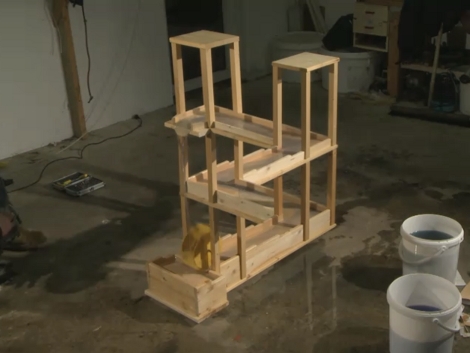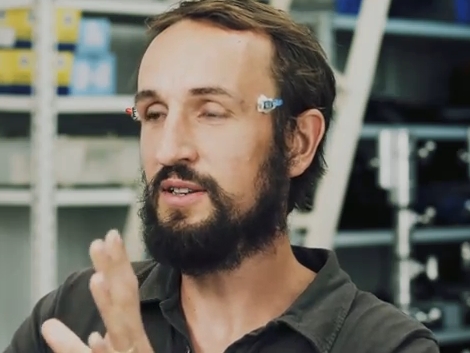
Instructables user [GuokrDIY] has provided a translation of a detailed guide on making one of our favorite Escher inspired illusions. Unlike the previous speculated solutions to Escher’s waterfall this one manages to keep the water path coherent up until the top level. The trick of the whole setup is very carefully controlling perspective to overlap the water source and outlet. We say water but for some reason the builder is actually using “toilet detergents” as the liquid… At any rate, the liquid is allowed to flow downhill until it reaches the fourth corner, which does not exist. The liquid actually falls off the end of the table (out of sight) and into a basin. A carefully timed pump in the basin pushes liquid up to the top of the waterfall through one of the model’s pillars, where it then cascades over the wheel.
Using sketchup to model the various structural components of the waterfall the design is fashioned out of PVC and ABS plastic, then skinned with mapped textures to ensure that everything looks coherent. The visual details are fine tuned by viewing the whole setup through a camcorder. The hardest part of the illusion seems to be modulating power to the pump in order to time it with the liquid’s flow.
We just hope that thing about toilet detergent was a mistranslation or some kind of sarcasm from the original Chinese article. Check out the model in action after the jump!













